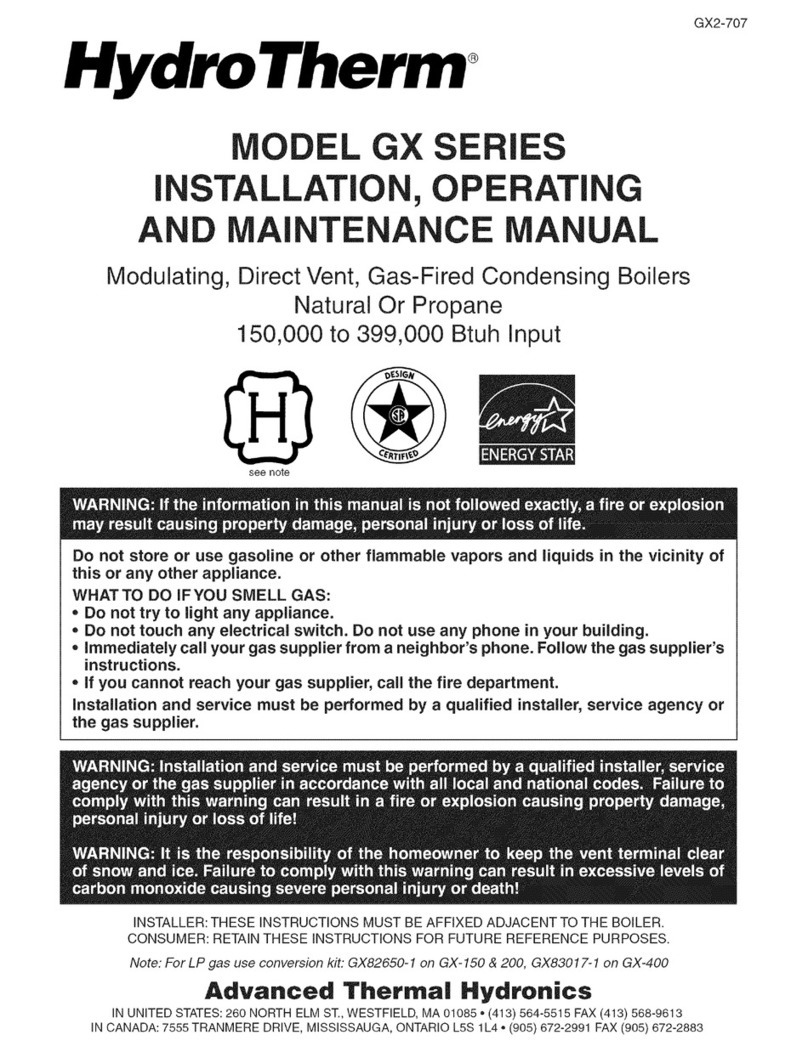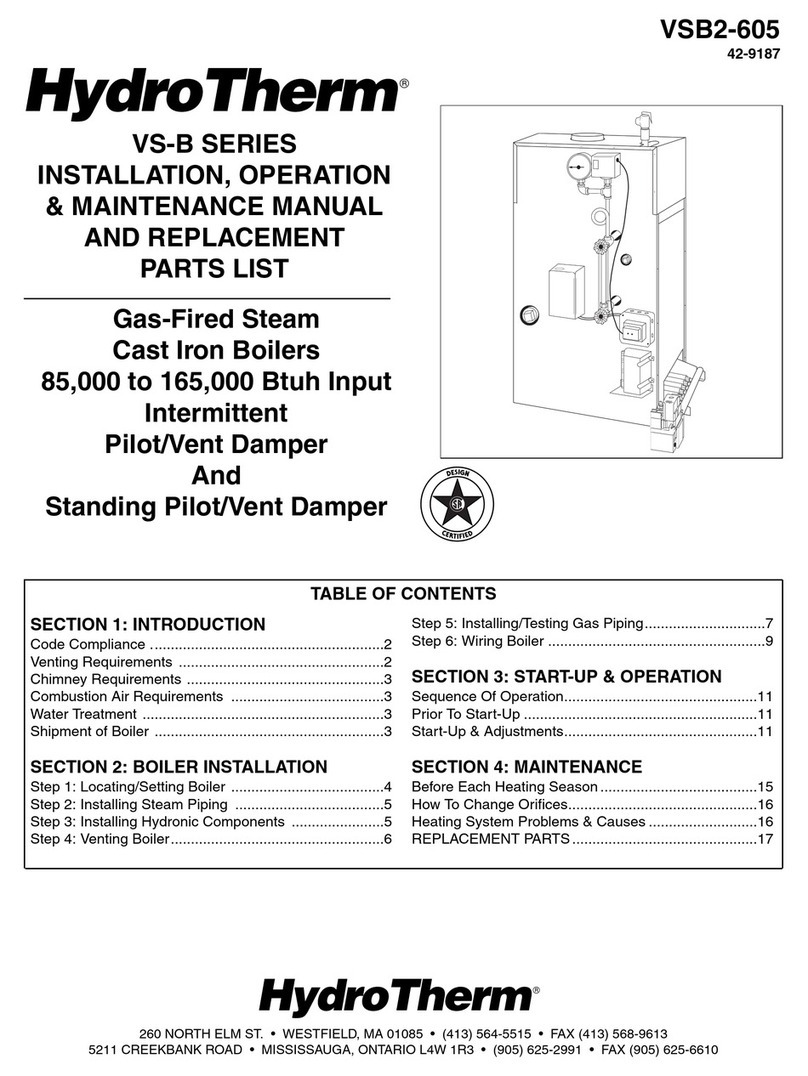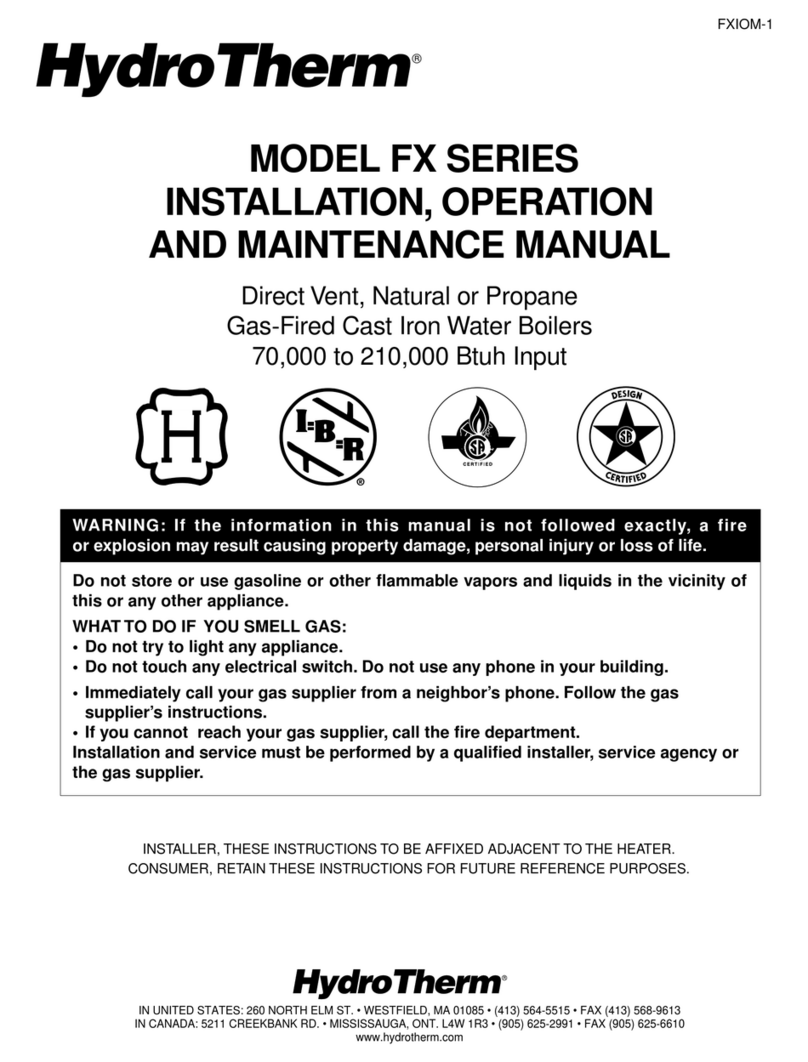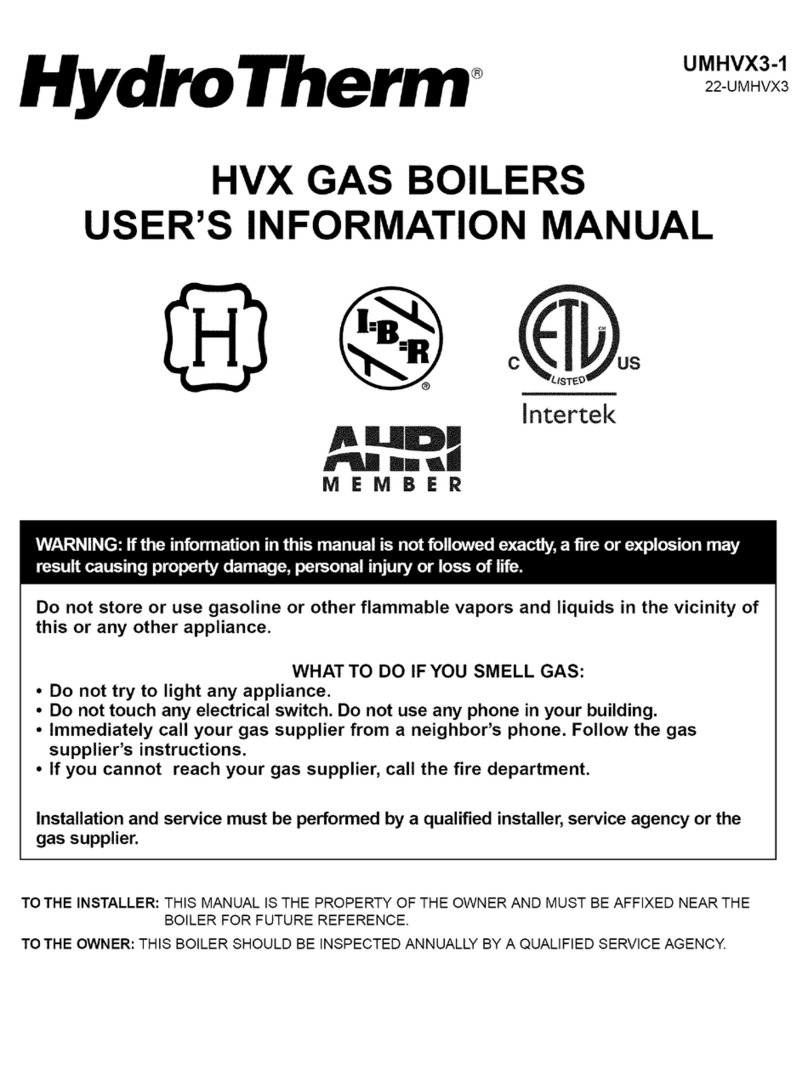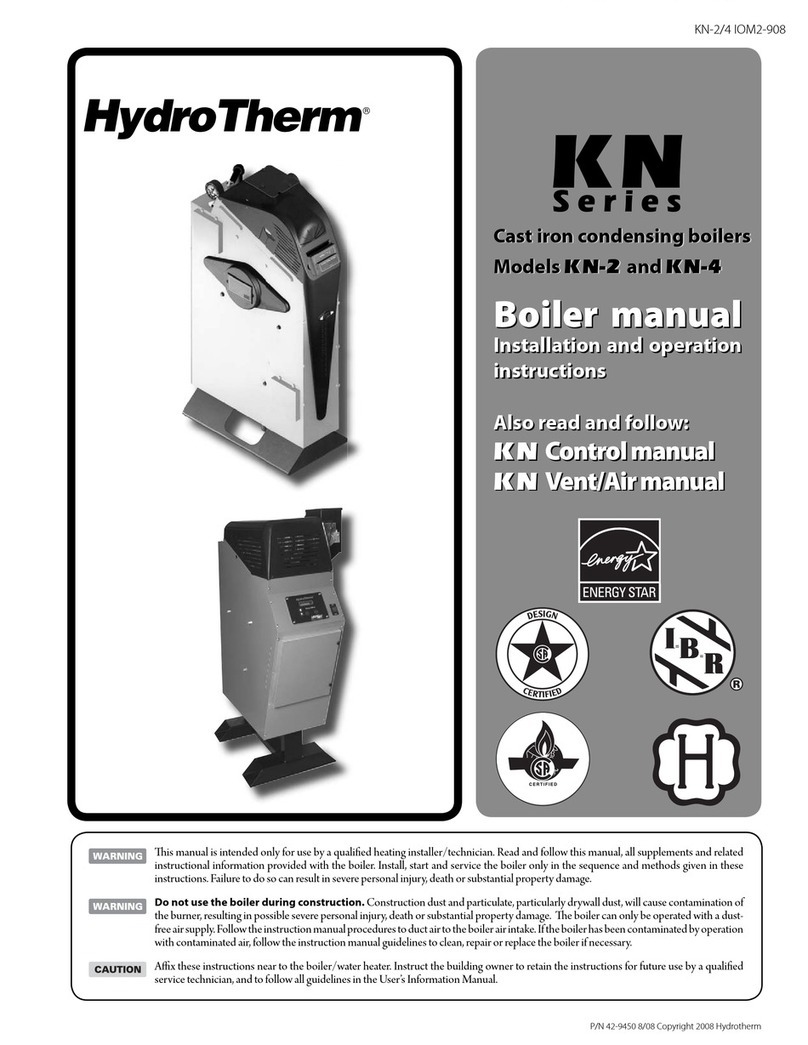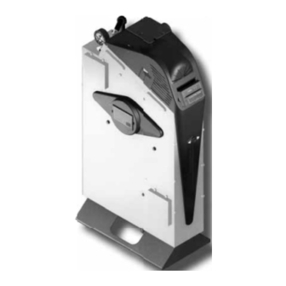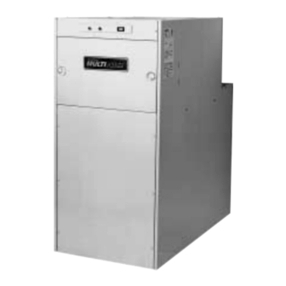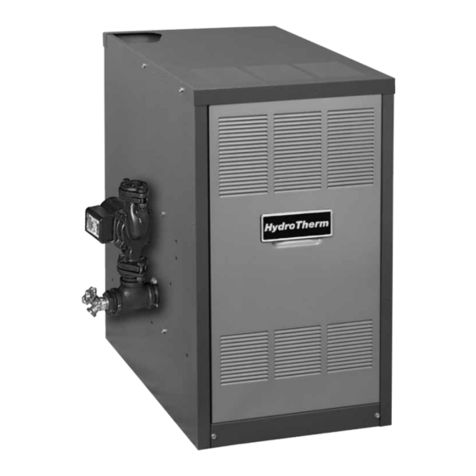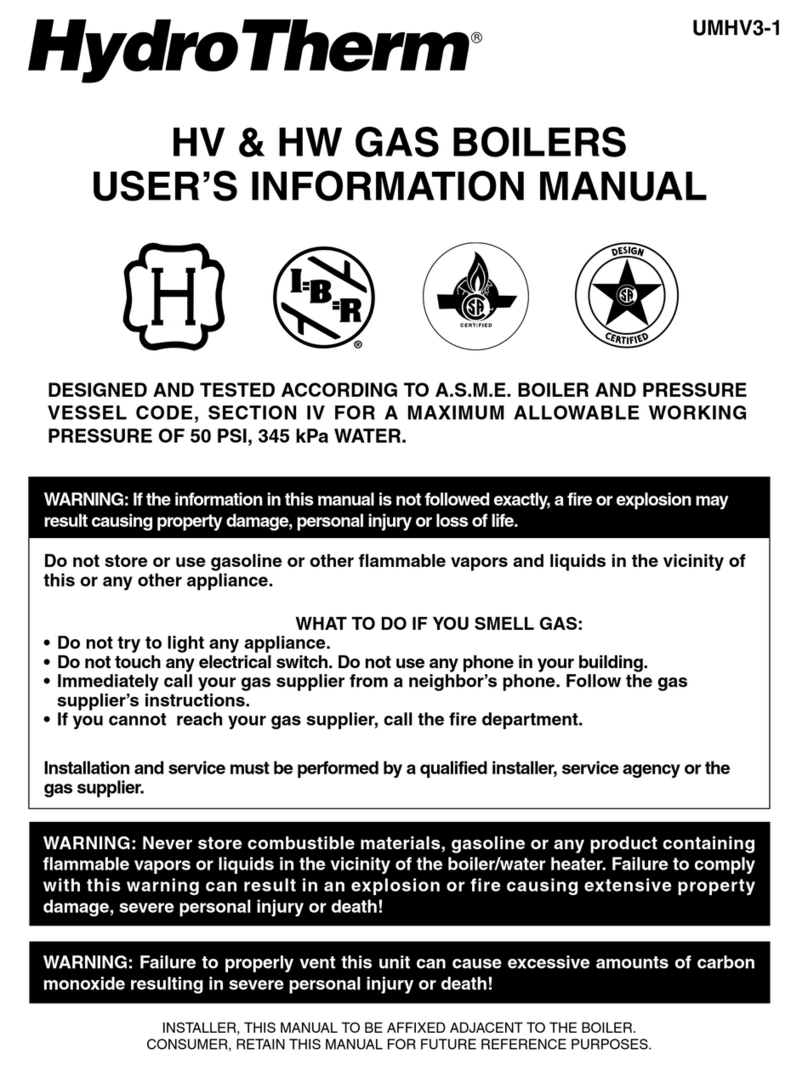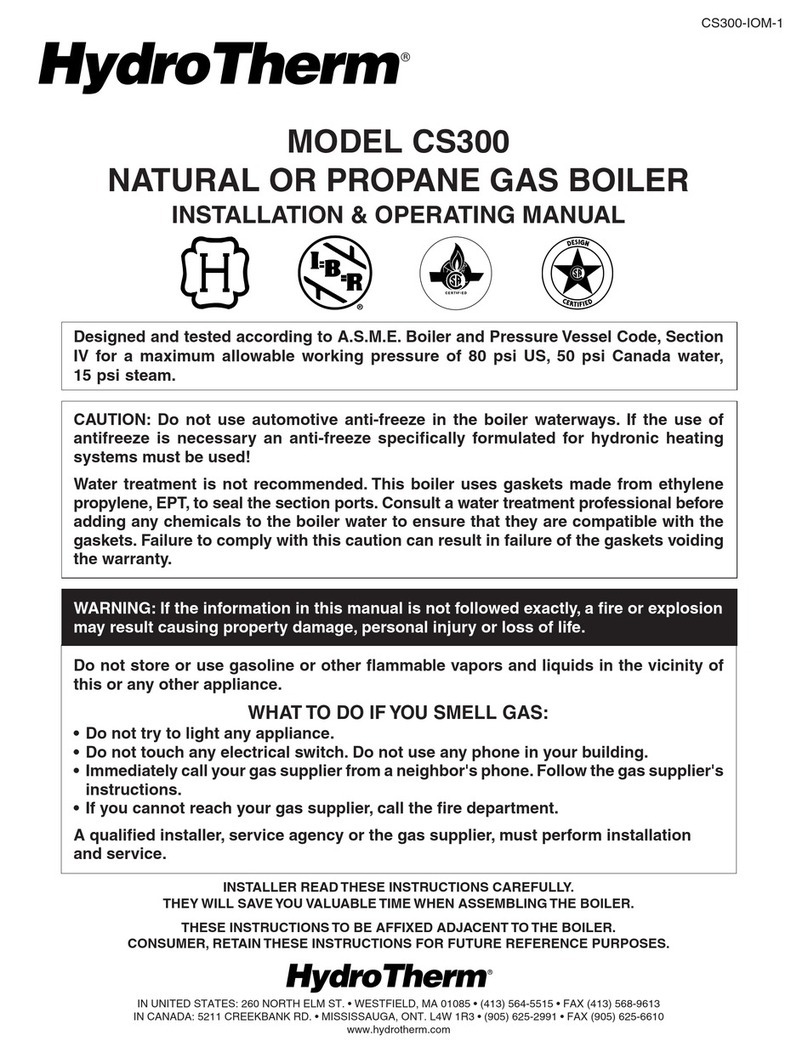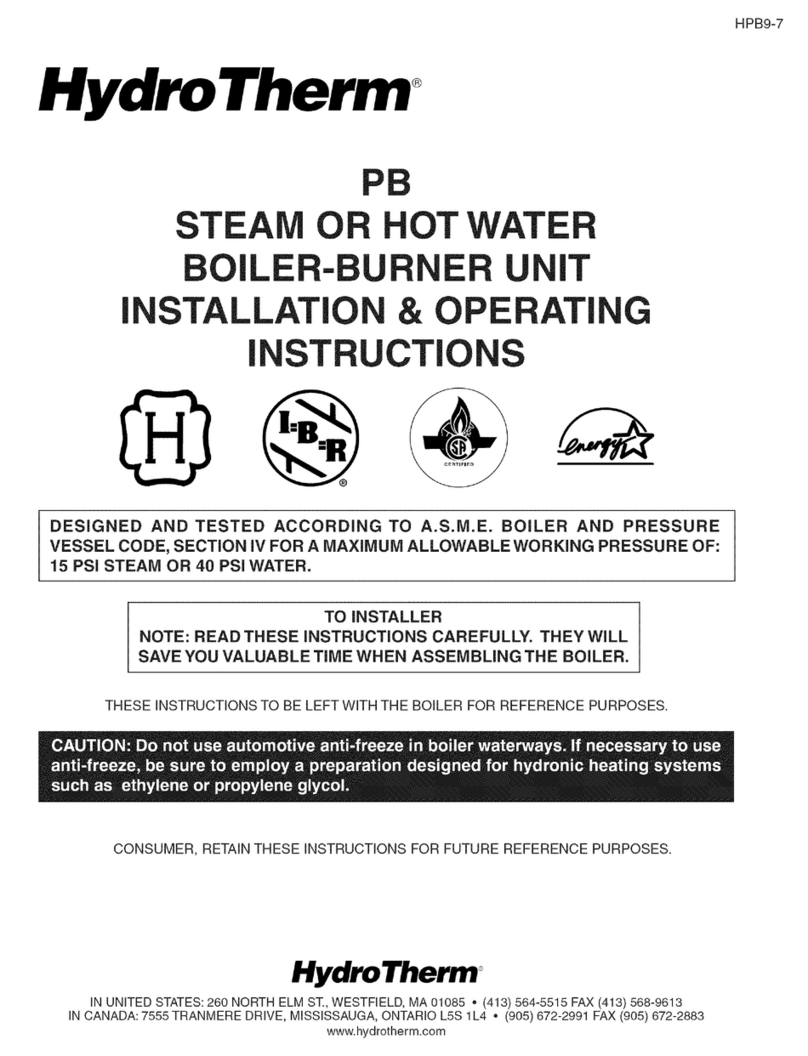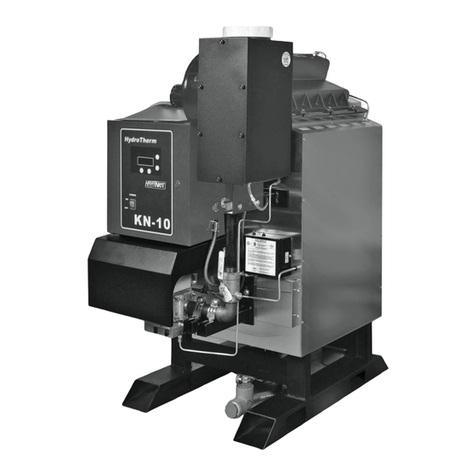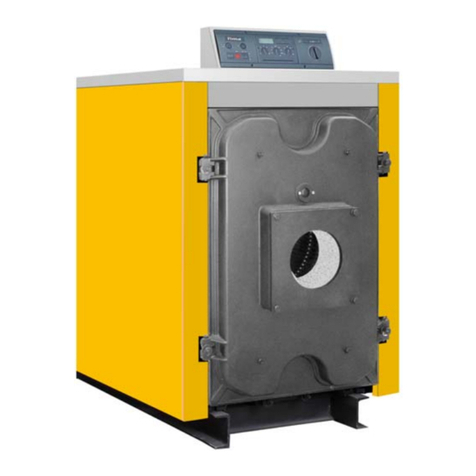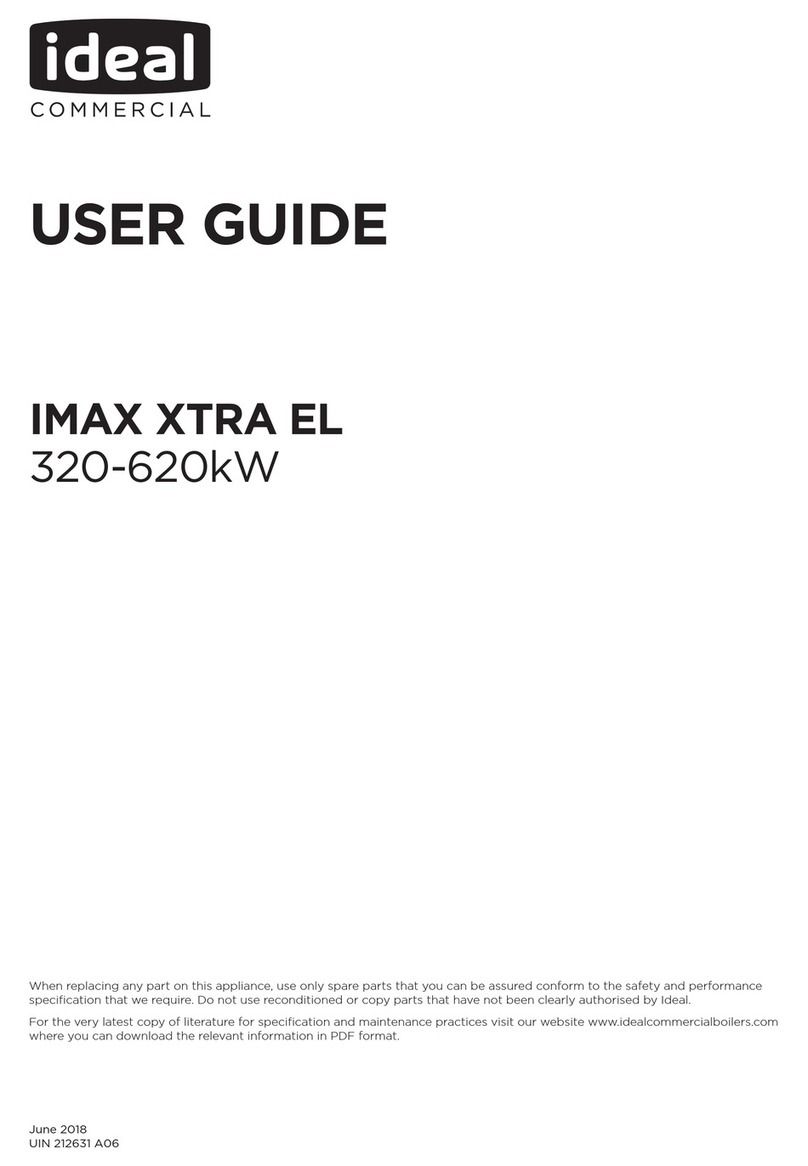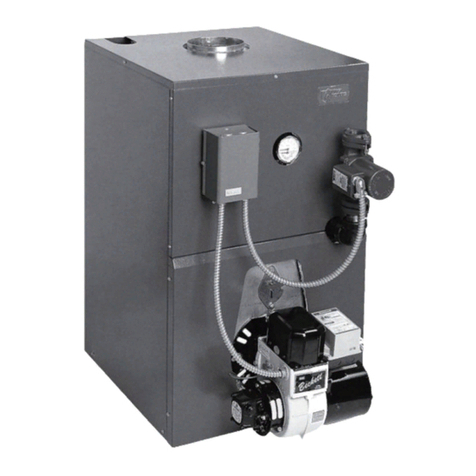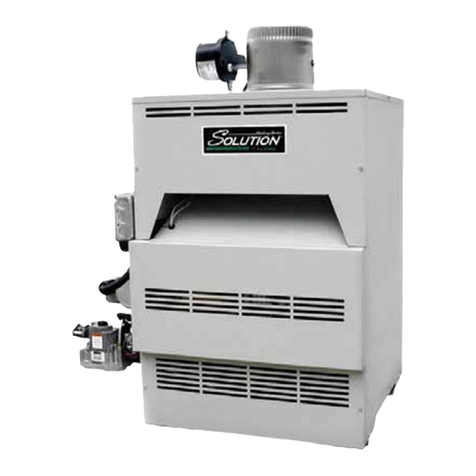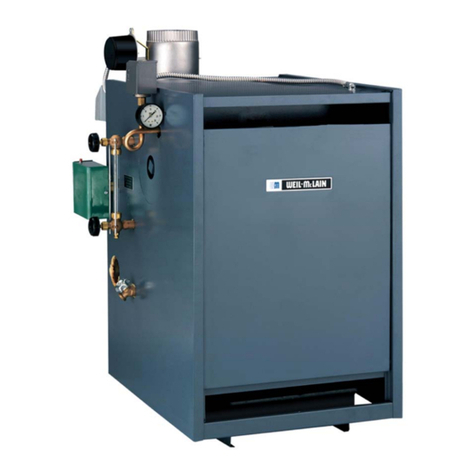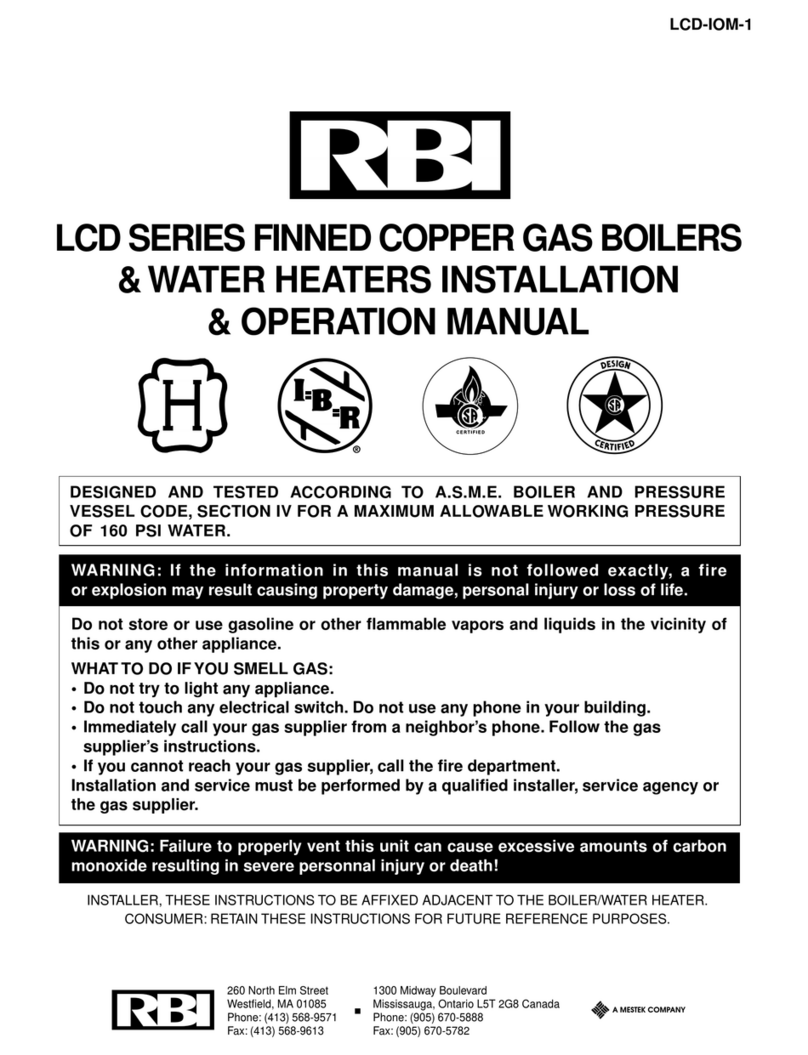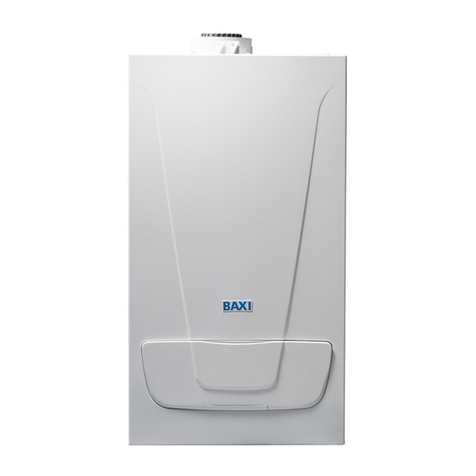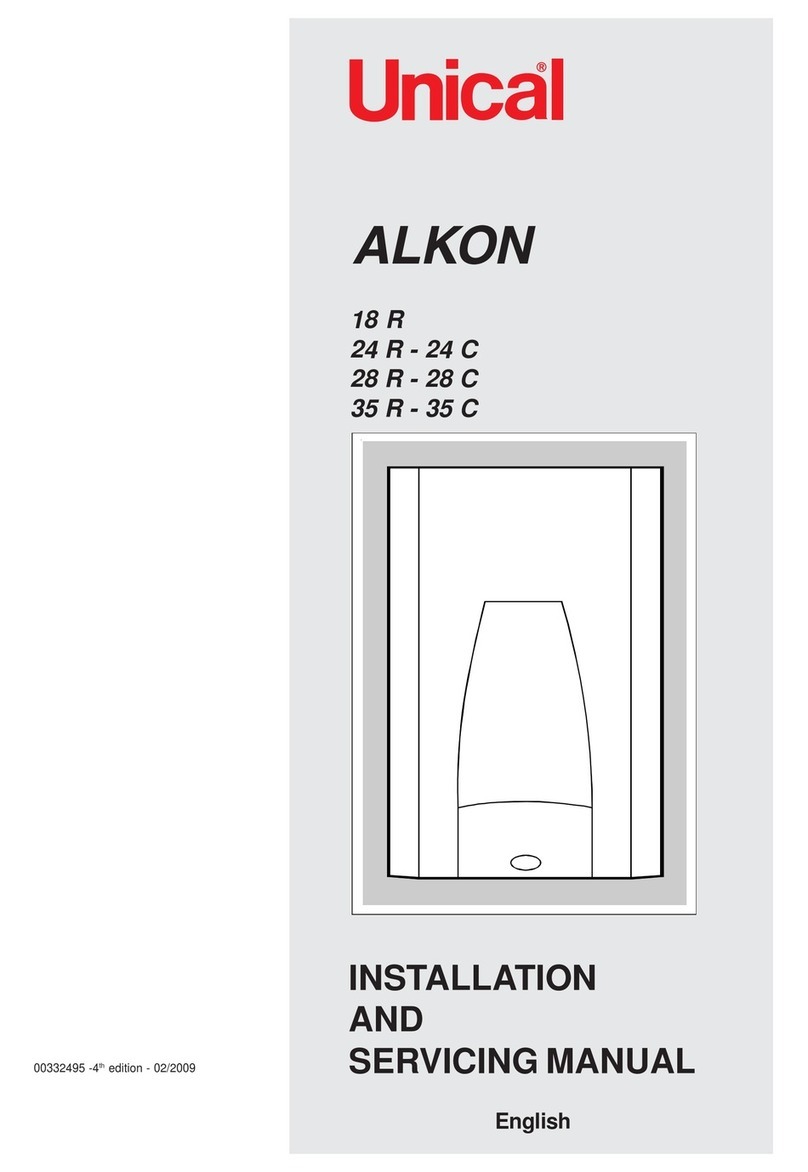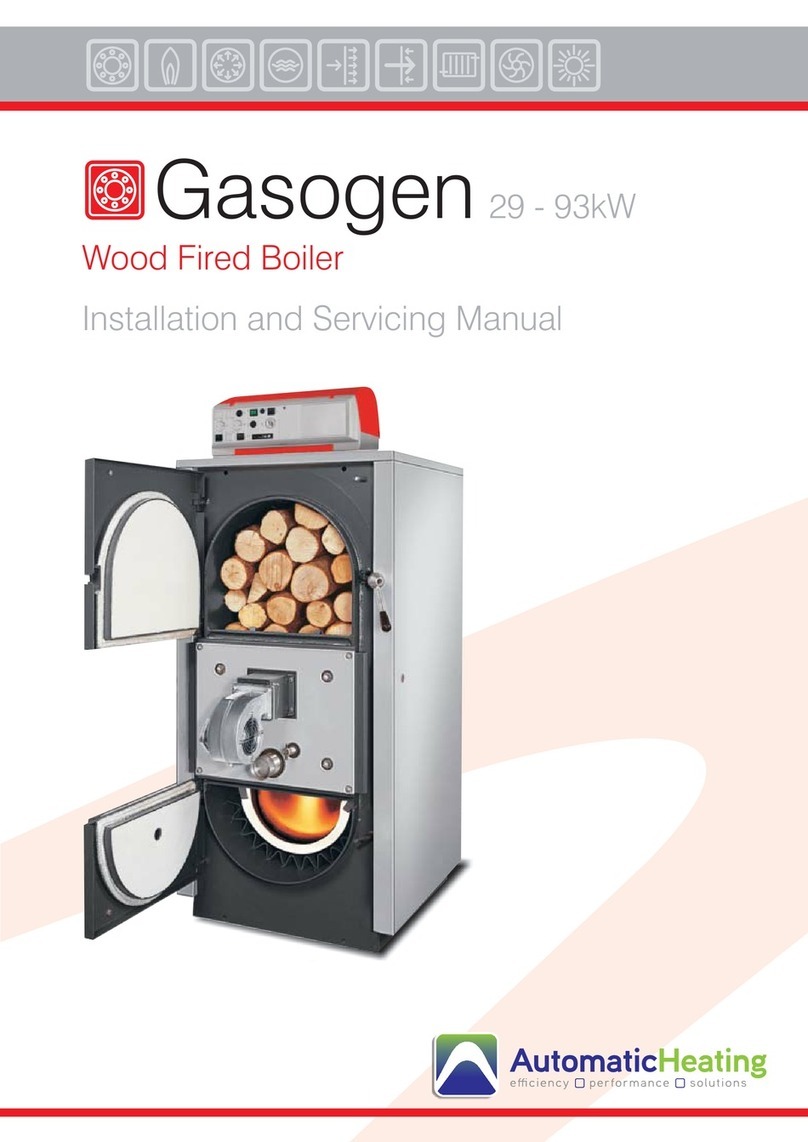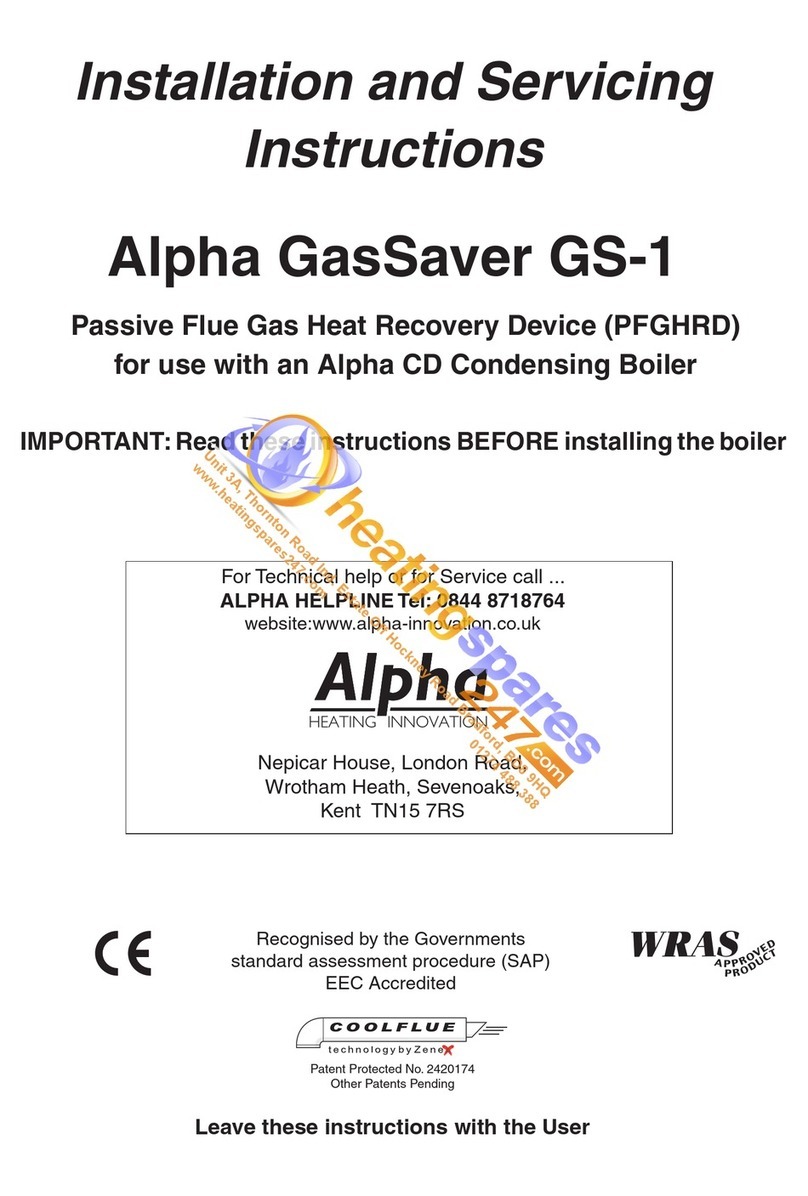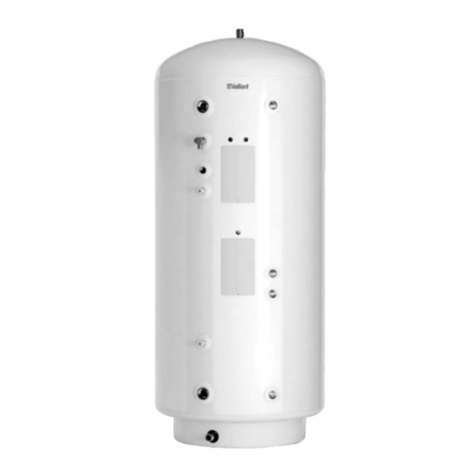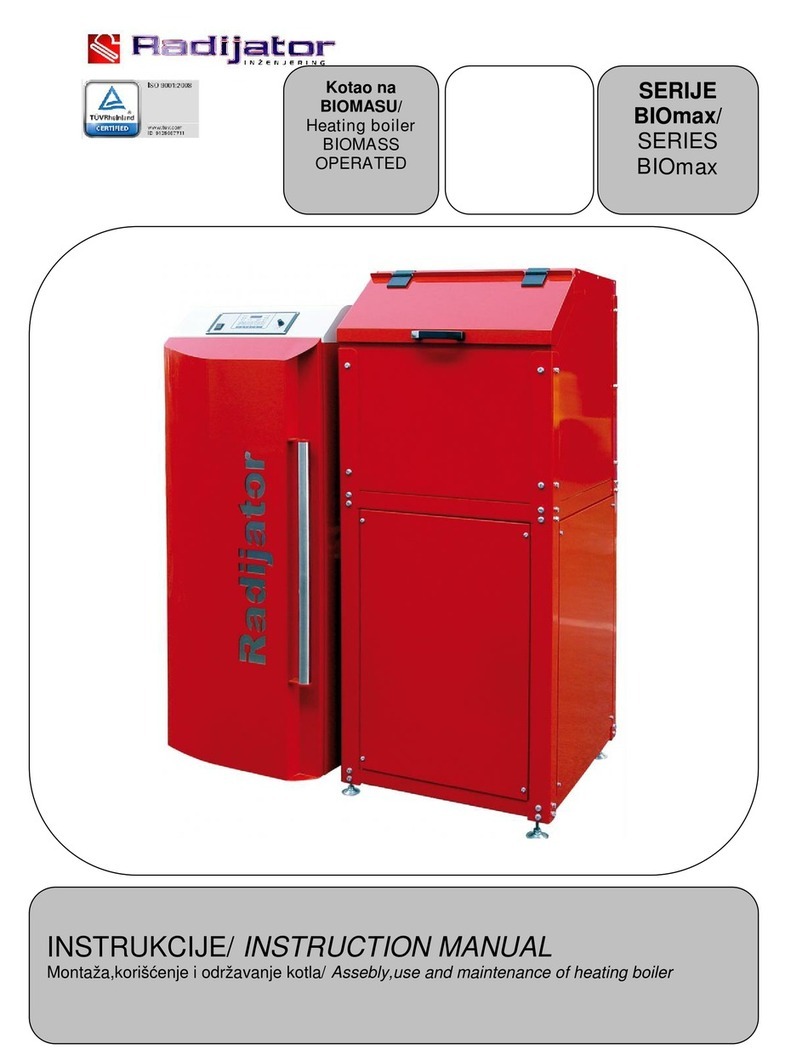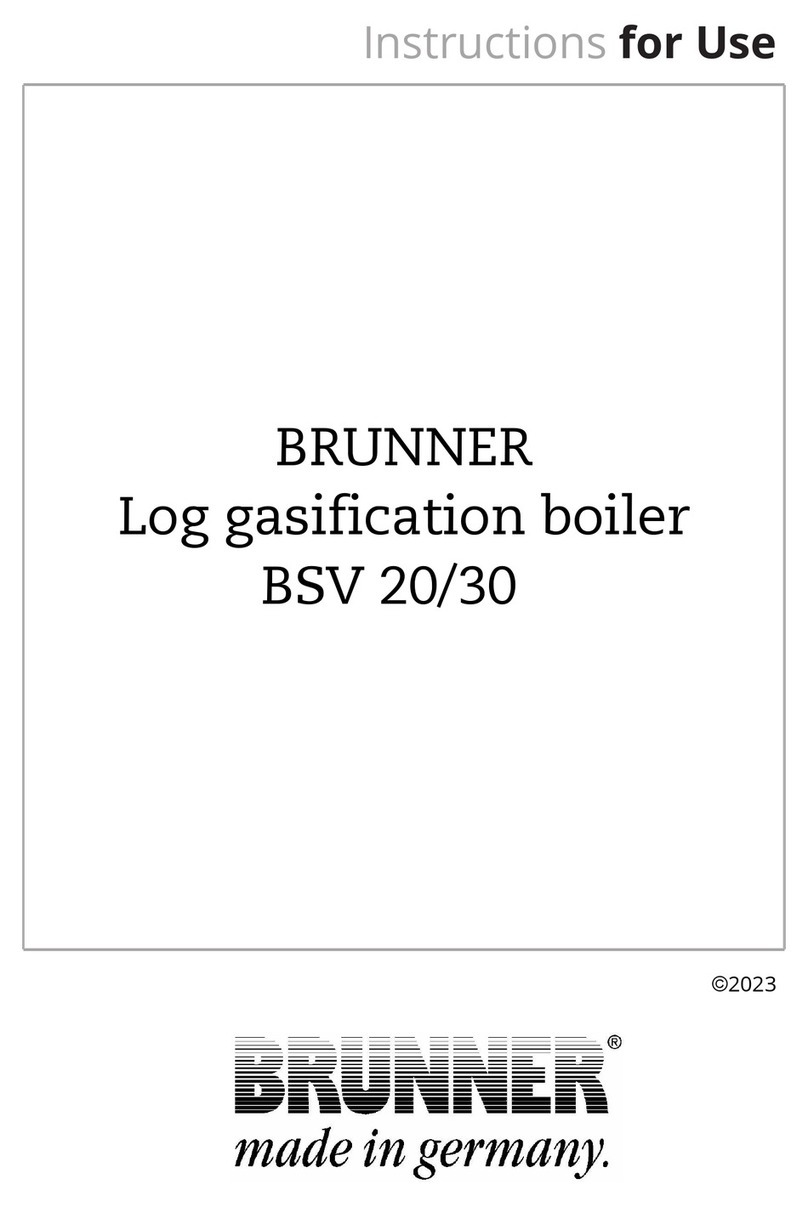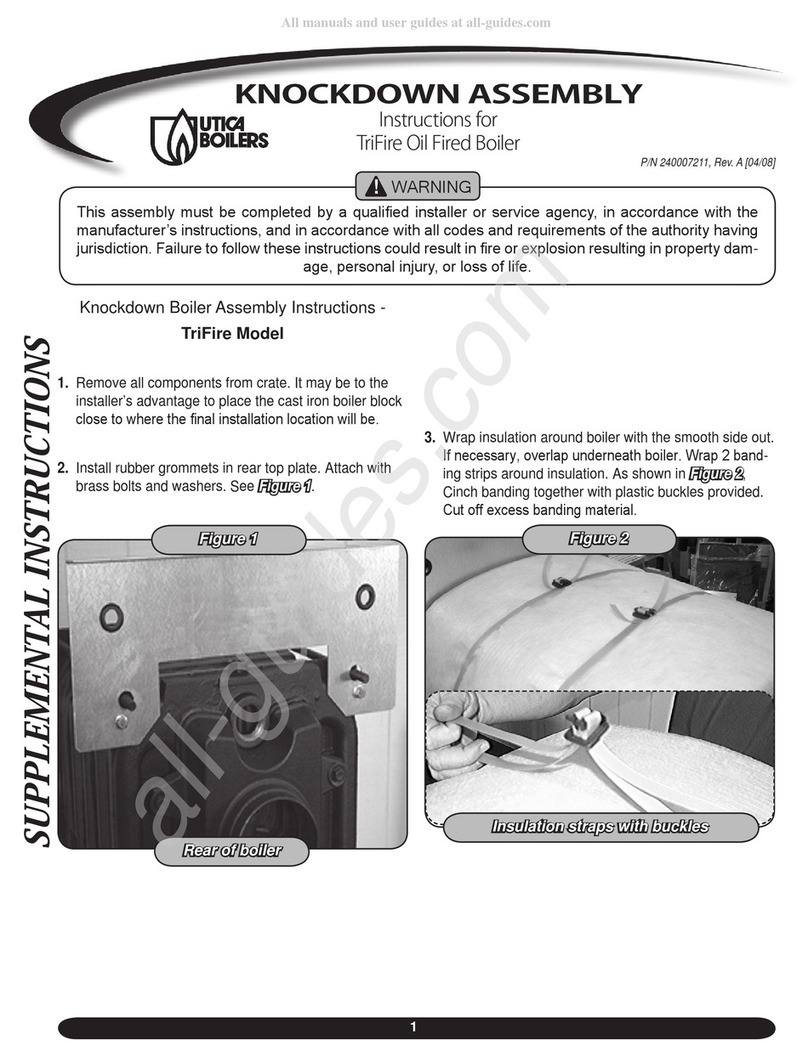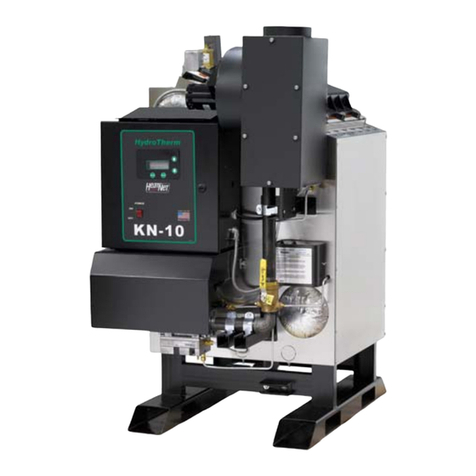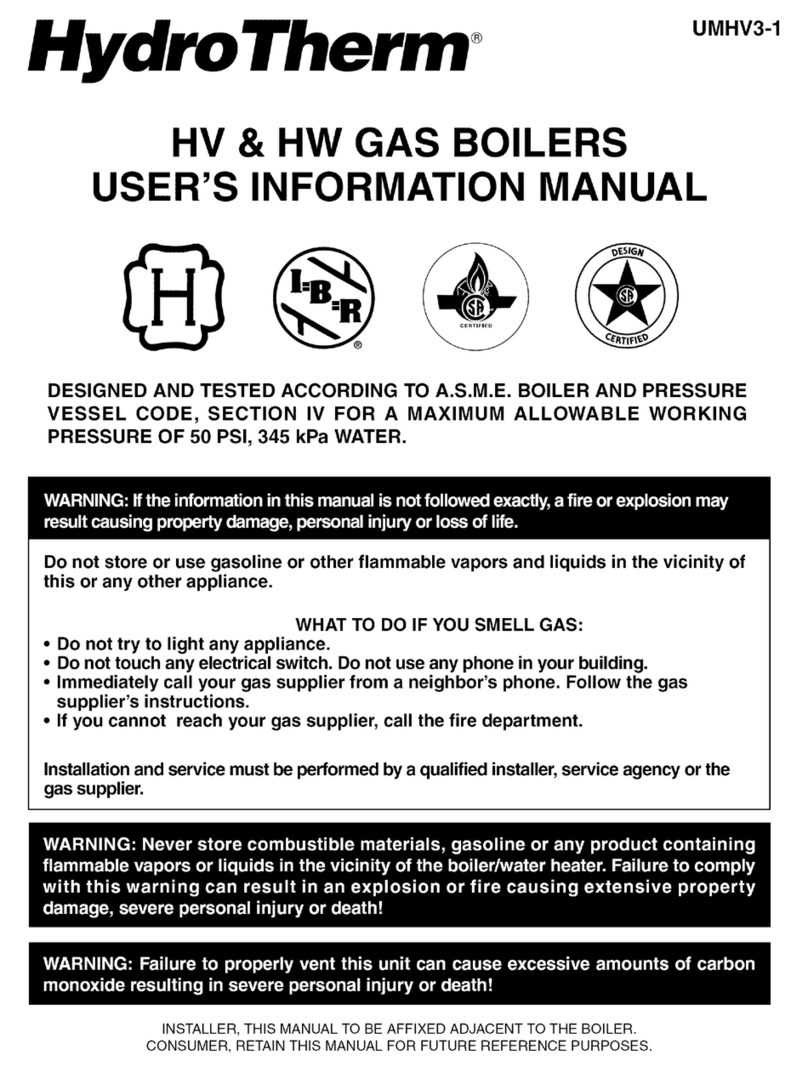
Page 4 KN INSTALLATION AND OPERATION INSTRUCTIONS
Buildings will require the installation of a fresh air duct
or other means of providing make-up air if the intake
air option isn't used. Any building utilizing other gas
burning appliances, a fireplace, wood stove or any type
of exhaust fan must be checked for adequate
combustion air when all of these devices are in
operation at one time. Sizing of an outside air duct must
be done to meet the requirements of all such devices.
WARNING: Never operate the KN in an environ-
ment subjected to a negative pressure unless it
is Direct Vented. Failure to comply with this
warning can result in excessive levels of carbon
monoxide causing severe personal injury or
death!
All Air From Inside The Building
If the boiler is to be located in a confined space the
minimum clearances listed in Table 1 must be
maintained between it and any combustible construction.
When installed in a confined space without the intake
air option two permanent openings communicating with
an additional room(s) are required. The combined
volume of these spaces must have sufficient volume to
meet the criteria for an unconfined space. The total air
requirements of all gas utilization equipment, fireplaces,
wood stoves or any type of exhaust fan must be
considered when making this determination. Each
opening must have a minimum free area of 1 in2/1000
Btu/hr, 2200 mm2/kW based on the total input rating of
ALL gas utilization equipment in the confined area. Each
opening must be no less than 100 in2, 64,516 mm2in
size. The upper opening must be within 12 in, 300 mm
of, but not less than 3 in, 80 mm from, the top of the
enclosure. The bottom opening must be within 12 in,
300 mm of, but not less than 3 in, 80 mm from, the
bottom of the enclosure.
All Air From Outside The Building
When installed in a confined space without the intake
air option two permanent openings communicating
directly with, or by ducts to, the outdoors or spaces that
freely communicate with the outdoors must be present.
The upper opening must be within 12 in, 300 mm of,
but not less than 3 in, 80 mm from, the top of the
enclosure. The bottom opening must be within 12 in,
300 mm of, but not less than 3 in, 80 mm from, the
bottom of the enclosure.
Where directly communicating with the outdoors or
communicating with the outdoors through vertical ducts,
each opening shall have a minimum free area of 1in2/
4000 Btu/hr, 550 mm2/kW of the total input rating of all
of the equipment in the enclosure.
Where communicating with the outdoors through hori-
zontal ducts, each opening shall have a minimum free
area of 1 in2/2000 Btu/hr, 1100 mm2/kW of the total
input rating of all of the equipment in the enclosure.
When ducts are used, they must have the same cross-
sectional area as the free area of the opening to which
they connect.
Table 2 - Make-up Air Duct Sizing
Required Cross Sectional Duct Area
Input 1/4 in, 6.4 mm Metal Wooden
(MBH)
Wire Screen Louvers Louvers
in2cm2in2cm2in2cm2
600 150 967 200 1292 600 3869
1000 250 1612 334 2154 1000 6448
2000 500 3224 668 4308 2000 12,896
When calculating the free area necessary to meet the
make-up air requirements of the enclosure,
consideration must be given to the blockage effects of
louvers, grills and screens.
Screens must have a minimum mesh size of 1/4 in,
6.4 mm. If the free area through a louver or grill is not
known ducts should be sized per Table 2 above.
Direct Intake Air Option - General
This configuration provides combustion air directly to the
boiler’s air intake using a dedicated pipe when using the
direct vent option. Combustion air can be drawn in
horizontally through an outside wall or vertically through
the roof, see Figures 1, 2, 3 & 4. It must be sized per
Table 3.
Single wall galvanized smoke pipe, single wall aluminum
pipe, flexible aluminum pipe, PVC or CPVC pipe can be
used for the intake air pipe.
Table 3 - Intake Air Pipe Sizing
Model Pipe Diameter
Size in2mm2
600 5127
1000 6152
2000 9229
NOTE: All joints in metal intake air systems must be
secured using corrosion resistant fasteners and
sealed using a suitable Silicone caulk. If PVC or
CPVC is used, the joints must be cleaned with a
suitable solvent and connected using a solvent
based PVC cement. The intake air system MUST be
supported by the building structure not the boiler.
